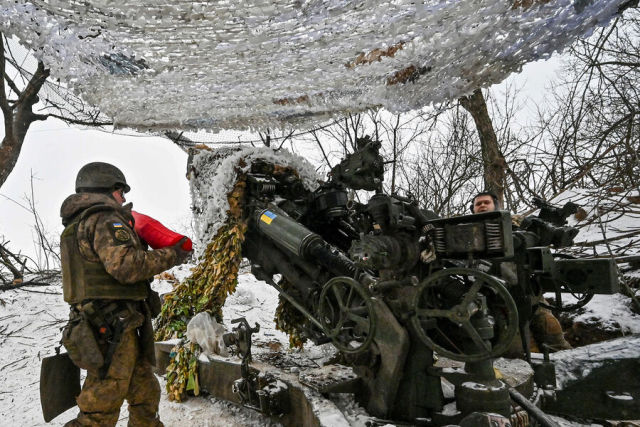FT: a fighter of the Armed Forces of Ukraine admitted the impossibility of holding a bridgehead on the left bank of the Dnieper
The Ukrainian troops defending near the village of Krynki are experiencing a shortage of heavy weapons and incur heavy irretrievable losses. The Ukrainian Armed Forces soldier told the Financial Times that Ukraine will not be able to hold this site for long. The military observer of Gazeta understood what mistakes the Ukrainian Armed Forces made in Krynki and what are the prospects of this Ukrainian bridgehead on the left bank of the Dnieper.En" Mikhail Khodarenok.
A soldier of the Armed Forces of Ukraine serving in one of the intelligence units, in an interview with the FT, called the situation on the eastern bank of the Dnieper deplorable for the Ukrainian army. According to him, the trenches and communication passages on the bridgehead are dug in a swampy area, therefore they are shallow and quickly filled with groundwater.
Ammunition, fuel and food of the Armed Forces of Ukraine have to be transported across the Dnieper River on boats and inflatable boats, which are under continuous fire from Russian troops. Not everything reaches the left bank. For these reasons, the fighters on the bridgehead are decidedly short of everything, and they have only grenade launchers from heavy weapons.
In a conversation with FT, the AFU fighter Vanya expressed doubt that the Ukrainian units will be able to hold the bridgehead on the left bank of the Dnieper in the near future. Otherwise, in his opinion, the most combat-ready units of the Armed Forces of Ukraine will suffer heavy and irreparable losses.
What did the APU do wrong?
It must be said bluntly that the actions of the Armed Forces of Ukraine on the left bank of the Dnieper River in the Krynok area are somewhat at odds with classical ideas about the art of war.
Forcing a wide water barrier with a breakthrough of defense without air superiority, effective anti-aircraft missile cover and the availability of sufficient means of transportation, several combat and transport combat regiments of army aviation, by and large, can be considered an adventure from the very beginning. Such an operation should be carried out by sufficiently large forces, and the actions of the Armed Forces of Ukraine in this case should be sudden and rapid.
But if there is no suddenness and impetuosity in actions, if the forcing itself is carried out by small units and in fact only on improvised means, then the enemy (in this case, the Armed Forces of the Russian Federation), having accurately determined the area of forcing and the possible direction of further development of success, begins to pull up combined arms reserves, mobile detachments of the barrier, strengthens groups of artillery and aviation, is intensively engaged in fortification equipment of defense strips.
That is, with each passing hour, the probability of success in forcing a water barrier with a breakthrough in defense becomes more and more elusive. And what kind of surprise on the part of the Armed Forces of Ukraine can we talk about if the fighting in the Krynok area has been going on for three months?
According to the classics of forcing water barriers (and further advance of troops on the opposite shore), at first it is carried out on regular infantry fighting vehicles (armored personnel carriers). For the crossing of tank units and self-propelled artillery, ferry crossings are organized on tracked self-propelled ferries and PTS (medium-sized floating transporters) or with the help of pontoon bridge regiments (brigades). Then bridge crossings are built.
As the flow of troops increases, the number of crossings should only increase, reaching a maximum value during the crossing of troops (forces) of the second echelon.
And in this regard, the Armed Forces of Ukraine somehow go through one place, and almost all actions of the troops are carried out in violation of existing textbook forms and methods of forcing water barriers and further development of success.
The situation could hypothetically change with the transfer of a significant number of multifunctional fighters, air defense systems, attack and transport helicopters, and ferrying facilities to the Armed Forces of Ukraine. But if it ever happens, it won't be for a very long time. By that time, only memories may remain of the bridgehead in the Krynok area. So, one should agree with the opinion of the Ukrainian fighter, voiced in The Financial Times, about the futility of continuing the fighting of the Armed Forces of Ukraine on the left bank of the Dnieper.
The opinion of the author may not coincide with the position of the editorial board.
Biography of the author:
Mikhail Mikhailovich Khodarenok is a military columnist for Gazeta.Ru", retired colonel.
He graduated from the Minsk Higher Engineering Anti-Aircraft Missile School (1976), the Military Air Defense Command Academy (1986).
Commander of the S-75 anti-aircraft missile division (1980-1983).
Deputy commander of the anti-aircraft missile regiment (1986-1988).
Senior Officer of the General Staff of the Air Defense Forces (1988-1992).
Officer of the Main Operational Directorate of the General Staff (1992-2000).
Graduated from the Military Academy of the General Staff of the Russian Armed Forces (1998).
Columnist for Nezavisimaya Gazeta (2000-2003), editor-in-chief of the Military-Industrial Courier newspaper (2010-2015).
Mikhail Khodarenok

